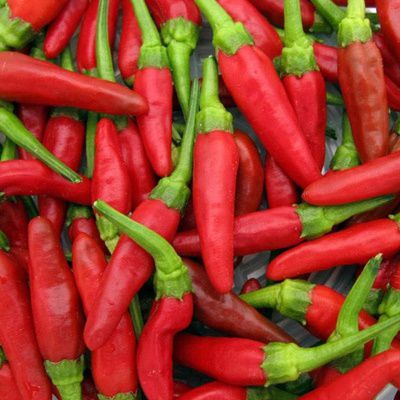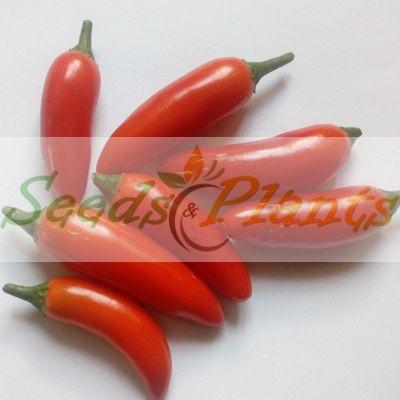Melrose Pepper – 5 Seeds
(Scoville heat units: 0)
R30.00
Melrose Peppers are sweeter than bell peppers and their thin, leathery skin allows for both pan-frying and stuffing making this sweet pepper a versatile pepper in the kitchen.
Indoor Sowing: Mid Winter, Late Winter and Early Spring.
Direct Sowing: Not Recommended.
Out of Stock
Email me when the product is back in stock.
Melrose Pepper Seeds. A superb heirloom brought to the United States from Italy many years ago. Tender and sweet, thin skinned, 4″ fruits, turn brilliant red and are produced very early. Flavor is good when harvested green, but becomes sweeter and more intense when allowed to mature. They are sweeter than the bell pepper and their thin, leathery skin allows for both pan-frying and stuffing making the Melrose a surprisingly versatile pepper in the kitchen. Great fresh, stuffed or fried.
Melrose peppers, with their curved, tapered bodies, may look like hotter chilies, but really they are zero-heat sweet peppers. They look a lot like the cubanelle pepper which a popular Italian frying pepper with a mild simmering heat. They also have thin walls like cubanelles, but their skin tends to be a little more leathery which helps them hold their shape as a stuffing pepper even with the thin skin.
Growing Melrose Pepper
Indoor Sowing: Mid Winter, Late Winter and Early Spring.
Direct Sowing: Not Recommended.
- Sow seeds indoors in Mid Winter, Late Winter or Early Spring.
- Soak your seeds overnight in warm water to help them germinate faster.
- Place the seeds on top of the growing medium and cover with a thin layer of soil.
- Mist the soil with water daily so that it stays moist.
- For best germination, keep the soil between 23 and 26 degrees Celsius.
- The pots won’t require light until the seeds sprout.
- Sweet Pepper seeds germinate in about 30 days and Hot Pepper seeds in about 60 days, but it can also take longer.
- After the seeds have germinated, place the pot on a windowsill or in a heated greenhouse.
- When they are 2.5cm tall prick out seedlings, moving each into their own 10cm pot. Make sure the roots are well covered and the leaves are just above the surface of the soil.
- Water and place in a light spot indoors.
- While plants are still growing indoors, move into 13cm pots filled with general purpose compost when roots begin to show through the drainage holes in the base.
- When plants are about 20cm tall, or before if they start to lean, stake with a stick.
- Pinch out the tops of peppers when they are about 30cm tall to encourage lots of branches.
- Plants are ready to be placed outdoors once all danger of frost has passed.
- Either plant directly into the ground, spacing them 45cm apart or transfer them to 22cm pots to give them plenty of space to grow.
- Peppers take a long time to grow large enough from seeds to produce mature fruit, and they require a fairly long growing season.
- Make sure you water regularly, especially in hot weather and feed every two weeks with a general purpose liquid fertilizer. Feeding should start when the flowers first appear and should continue until the fruit have been harvested.
Disclaimer
Medicinal Information:
All medicinal information on this website is for educational and informational purposes only and may not be construed as medical advice. The information is not intended to replace medical advice or treatment offered by healthcare professionals.
Seeds, Plants, Plant Cuttings, Geophytes and Dried Herbs:
In some countries and provinces, certain plants are deemed as invasive and are not allowed to be planted at all, whilst some plants are allowed to be grown only in certain areas or provinces. The onus is on you as the buyer to familiarize yourself with the regulations pertaining to your location, before purchasing any of our seeds, plants, plant cuttings, geophytes or dried herbs. We will not be held liable, should you purchase any seeds, plants, plant cuttings, geophytes or dried herbs. from us which are prohibited in your country or province.
Related products
Chocolate Habanero Chilli Pepper – 10 Seeds
(Scoville heat units: 300,000 to 425,000)

















